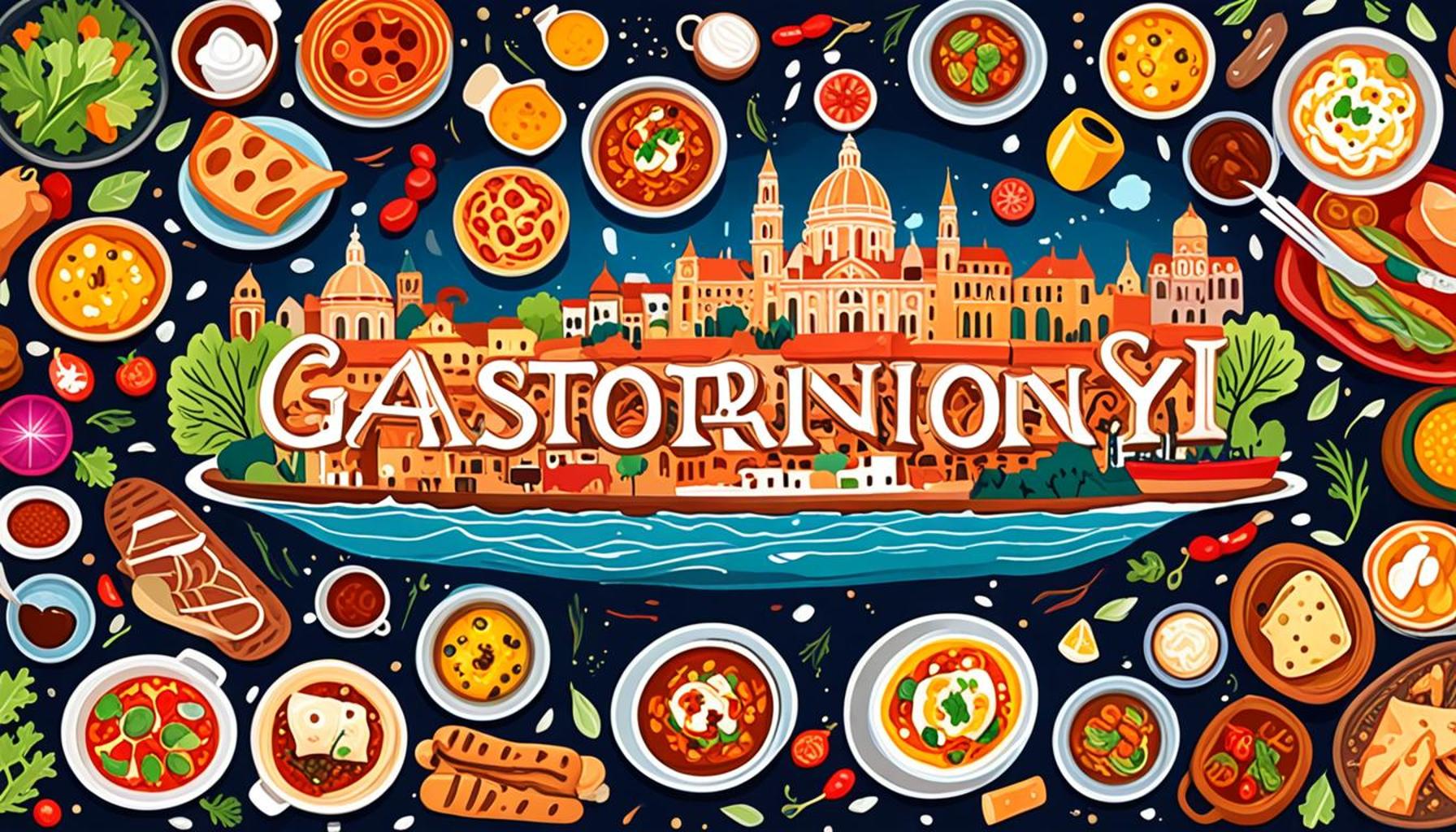Gastronomy in Focus: Itineraries that Celebrate Traditional Cuisine in Tourist Destinations

A Deep Dive into Cultural Culinary Experiences
Food is not merely sustenance; it is a canvas painted with flavors, techniques, and traditions that narrate the story of a people. Each dish carries with it a wealth of history, a reflection of the land and culture from which it originates. As travelers wander through bustling cities and serene countrysides, they often find that gastronomy serves as a profound medium for cultural exchange, enabling them to engage with local communities beyond the surface of tourism.
The culinary landscape in popular tourist destinations is vibrant and diverse, offering a wide array of experiences that highlight the essence of traditional cuisine. For instance, visiting farmers’ markets provides an opportunity to understand local agriculture and seasonal ingredients, which are fundamental to many regional dishes. In the United States, attending a farmer’s market in California’s Napa Valley might allow you to sample the fresh tomatoes that become the base for a classic Italian marinara sauce, or to taste artisanal cheeses crafted from local milk.
Additionally, many itineraries now incorporate cultural tours that highlight the historical significance of local food traditions. A visit to New Orleans, for instance, can take you from the French Quarter’s famed gumbo and jambalaya to the historic plantations where many of these recipes have roots in Creole cooking. Each meal can become a celebration of the city’s rich tapestry of cultures, with the stories of immigrants and indigenous peoples woven into every bite.
Moreover, cooking classes are a fantastic way to dive deeper into the local culinary scene. Imagine spending a morning at a cooking school in Tuscany, where you’re guided by a seasoned chef as you learn to make authentic pasta from scratch. This hands-on experience not only enhances your cooking skills but also allows you to appreciate the time-honored techniques that have been passed down through generations. Such encounters forge connections between travelers and locals, blending personal interaction with cultural learning.
The rise of culinary tourism signifies a shift in how individuals seek to engage with the world around them. It transcends mere consumption; it is an exploration of how food embodies local customs and societal values. As travelers embark on this flavorful journey, they encourage the preservation of these culinary traditions, facilitating a greater understanding of diverse cultures.

As you prepare for your next adventure, consider including dedicated culinary experiences in your itinerary. Whether you’re sampling street food in Bangkok or savoring a Michelin-starred meal in Paris, targeting traditional cuisine will transform your travels into a delicious exploration of culture and community.
DISCOVER MORE: Click here to uncover luxury hideaways
Exploring Culinary Heritage through Local Flavors
The allure of traditional cuisine stems not only from its flavors but also from the intricate narratives that accompany each dish. Engaging with traditional culinary practices offers an enlightening avenue for travelers to appreciate the rich tapestry of societal interactions, historical events, and geographical influences that shape a culture. From vibrant street vendors to acclaimed restaurants, the gastronomic experiences available in popular tourist destinations are gateways to understanding local heritage.
In many cultures, cooking is a communal activity, and travelers are increasingly drawn to gastronomic itineraries that facilitate participation in these local customs. For example, in Oaxaca, Mexico, the “Mole Tour” allows visitors to navigate the city while learning the nuances of mole sauce—a dish with roots deeply embedded in regional history. Visitors can enjoy cooking demonstrations in local kitchens, showcasing the significance of ingredients such as chocolate, spices, and indigenous chilies, culminating in a delectable meal that transcends the plate.
Furthermore, culinary festivals have become hubs of tradition, drawing together local producers, chefs, and communities. In Italy, the annual Palio di Siena features not only the famous horse race but also a celebration of Tuscan cuisine. Attendees can participate in cooking contests, wine tastings, and explore local delicacies, capturing the essence of Siena’s culinary identity. Such events celebrate heritage and serve as a vital platform for sustaining local agricultural practices and recipes, ensuring these invaluable traditions thrive amid modernity.
When planning a gastronomic journey, consider the following aspects to enrich your experience:
- Food Tours: Join guided tours that delve into local specialties, from cheese tastings in Vermont to seafood discoveries in the coastal towns of Maine.
- Cultural Workshops: Engage in hands-on experiences, like learning to make hand-pulled noodles in a Beijing home or participating in a pasta-making class in Bologna.
- Local Eateries: Dine at family-run establishments where recipes have been handed down through generations, allowing you to taste authenticity that mass-production simply cannot replicate.
The thrill of discovering traditional cuisine extends beyond taste; it offers an enriching connection to the local culture and its people. Each dish tells a story, presenting insights into the geography, agriculture, and the very essence of the community. As culinary tourism grows, it plays a pivotal role in preserving these traditions, advocating for sustainable practices that bridge the gap between past and present.
As you dive into culinary adventures around the globe, remember to seek out experiences that highlight traditional cuisine, transforming your travels into an insightful journey through history, culture, and local flavors. Your taste buds will not only savor delicious meals but will also acquire the profound stories entwined in every bite.
| Advantages | Description |
|---|---|
| Authenticity | Experience regional culinary art directly from locals. |
| Cultural Immersion | Gain insights into traditions and heritage through food. |
| Community Support | Promote local businesses and foster sustainable tourism. |
The exploration of gastronomy is not merely about satisfying hunger; it forms an integral part of the travel experience. When it comes to itineraries that celebrate traditional cuisine, travelers gain the opportunity to dive into the heart of a culture. Through unique dishes and cooking practices, visitors can better understand the history, values, and identity of a destination. Authenticity is a critical factor in today’s tourism landscape. Tourists increasingly seek out experiences that feel genuine—those that allow them to connect with local communities. This journey introduces them to native ingredients, age-old recipes, and cooking techniques that have been preserved over generations. Such culinary experiences are enriched by cultural immersion—where meals turn into stories about the land and its people. Additionally, these itineraries contribute to community support, as travelers engage with local farmers, chefs, and artisans. By savoring traditional dishes, visitors help sustain local economies and preserve important culinary traditions. This symbiotic relationship between tourists and locals fosters a deeper appreciation and understanding of the region, ultimately promoting sustainable tourism. Through the lens of gastronomy, these travel itineraries not only tantalize the taste buds but also create meaningful connections that resonate beyond the dining table. Each meal becomes an opportunity to explore a narrative, encouraging travelers to venture further into the local landscape and discover the treasures hidden in each bite.
EXPLORE MORE: Click here to uncover budget-friendly gems
Connecting Communities through Culinary Experiences
At the heart of gastronomic itineraries is the integral role that food plays in community building and cultural exchange. Culinary tourism has emerged as a powerful vehicle for fostering connections not only among travelers but also between locals and visitors. By indulging in the flavors of a destination, tourists gain insight into the cultural heritage, customs, and lifestyles of the people who call that place home.
One captivating example is the “Food for Thought” tours in New Orleans, Louisiana, where visitors not only indulge in Creole and Cajun delicacies but also learn about the city’s eclectic history, shaped by African, French, Spanish, and Caribbean influences. While tasting gumbo or jambalaya, travelers can hear stories of resilience and celebration that resonate through the traditions of the community. Such experiences highlight how cuisine acts as a living narrative, capable of transporting participants to the very roots of local identity.
Moreover, these culinary experiences can significantly support local economies. By engaging in farm-to-table dining experiences in regions like California’s Napa Valley, visitors can actively participate in promoting sustainable agricultural practices. Many local wineries and farms offer behind-the-scenes tours, allowing visitors to see firsthand how their culinary staples are sourced and prepared. This direct involvement nurtures an appreciation for local farmers while ensuring the longevity of traditional farming methods.
In addition to direct farm interactions, culinary experiences also extend to preservation through local markets. For instance, the bustling Pike Place Market in Seattle, Washington, serves as a culinary epicenter where local artisans and small-scale producers showcase their goods. Visitors can sample freshly caught salmon, artisan cheeses, and handcrafted pastries, all while learning about the sustainability practices that redefine local gastronomy.
- Pop-Up Dinners: Many tourist destinations are now embracing pop-up dining events, where chefs create unique menus featuring local ingredients in unconventional settings, from botanical gardens to historic landmarks. These experiences often include local lore shared by the chefs themselves, enhancing the storytelling aspect of culinary tourism.
- Cooking Classes: Engaging in cooking classes with local chefs allows travelers to recreate the essence of the cuisine at home. For example, a workshop in a Tuscan villa could teach participants how to craft handmade pasta, thereby preserving that culinary skill and sharing it with a broader audience.
- Heritage Recipes: Many culinary itineraries emphasize the importance of heritage recipes that have been passed down through generations. Participating in tastings or demonstrations focusing on indigenous foods can reveal connections to land management practices and cultural narratives that have existed for centuries.
As the significance of culinary traditions continues to grow, so too does the need for travelers to remain conscious of the impact their engagements have on communities. Embracing the principles of responsible tourism is crucial, ensuring that local cultures are honored and supported through authentic culinary experiences. This approach not only fosters a deeper understanding of culinary practices but also ensures that these vibrant traditions persist for future generations.
As you chart your own culinary adventures, immerse yourself in the experiences that promote understanding and connection. By exploring the intersections of food, history, and culture, you will undoubtedly find yourself enriched by stories that define the essence of each destination. Every bite taken will become a celebration of local heritage, intertwining the threads of history, community, and culinary excellence.
DISCOVER MORE: Click here for budget-friendly family travel itineraries
Exploring the Heart of Culinary Heritage
In conclusion, gastronomic itineraries offer travelers a rich tapestry of flavors, stories, and cultural significance that go far beyond mere dining experiences. As we traverse global culinary landscapes—from New Orleans’ vibrant food scene to the diverse offerings of Pike Place Market in Seattle—each dish acts as a portal to understanding the heart and soul of a community. The impact of engaging with traditional cuisine is profound; it not only fosters an appreciation for local heritage but also strengthens the economies that depend on these culinary traditions.
As you embark on your own culinary adventures, consider how your participation can influence the sustainability of local practices and the preservation of cherished recipes. By opting for responsible tourism, you contribute to a model that respects and uplifts local culture while simultaneously enriching your travel experience. This harmonious relationship between tourists and communities lays the groundwork for a future where culinary excellence thrives, ensuring that the stories and flavors of these vibrant cultures are passed down through generations.
Whether participating in immersive cooking classes, attending pop-up dinners, or exploring bustling local markets, each experience promises to deepen your connection to the destinations you visit. Ultimately, gastronomy serves not just as nourishment but as a celebration of shared humanity—a universal language that connects us all. So, embrace the opportunity to cultivate relationships through food and be prepared to uncover the narratives that await in every bite.



